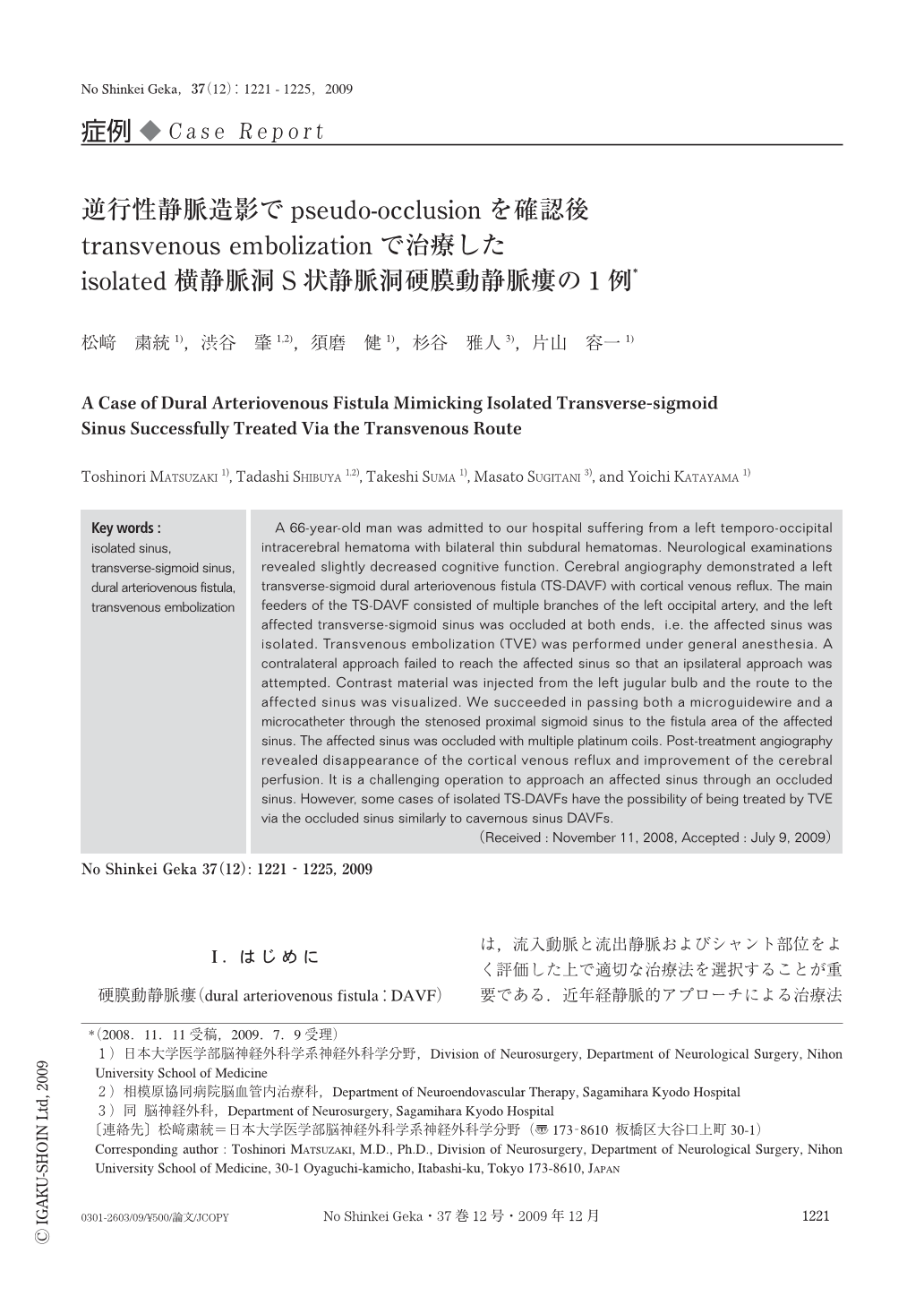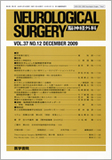Japanese
English
- 有料閲覧
- Abstract 文献概要
- 1ページ目 Look Inside
- 参考文献 Reference
Ⅰ.はじめに
硬膜動静脈瘻(dural arteriovenous fistula:DAVF)は,流入動脈と流出静脈およびシャント部位をよく評価した上で適切な治療法を選択することが重要である.近年経静脈的アプローチによる治療法は確立されつつあるが,cortical venous reflux(CVR)がありアプローチ可能な静脈洞の近位側,遠位側ともに閉塞してisolated sinusを呈している場合には治療に難渋することが多い.今回われわれは,isolated sinusを呈した横静脈洞S状静脈洞硬膜動静脈瘻(transverse-sigmoid sinus dural arteriovenous fistula:TS-DAVF)に対して逆行性静脈造影を行うことで,pseudo-occlusion(機能的閉塞)であることが確認でき,経静脈的塞栓術(transvenous embolization:TVE)を容易に行えたことで,良好な治療結果が得られた症例を経験したので文献的考察を加えて報告する.
A 66-year-old man was admitted to our hospital suffering from a left temporo-occipital intracerebral hematoma with bilateral thin subdural hematomas. Neurological examinations revealed slightly decreased cognitive function. Cerebral angiography demonstrated a left transverse-sigmoid dural arteriovenous fistula (TS-DAVF) with cortical venous reflux. The main feeders of the TS-DAVF consisted of multiple branches of the left occipital artery, and the left affected transverse-sigmoid sinus was occluded at both ends,i.e. the affected sinus was isolated. Transvenous embolization (TVE) was performed under general anesthesia. A contralateral approach failed to reach the affected sinus so that an ipsilateral approach was attempted. Contrast material was injected from the left jugular bulb and the route to the affected sinus was visualized. We succeeded in passing both a microguidewire and a microcatheter through the stenosed proximal sigmoid sinus to the fistula area of the affected sinus. The affected sinus was occluded with multiple platinum coils. Post-treatment angiography revealed disappearance of the cortical venous reflux and improvement of the cerebral perfusion. It is a challenging operation to approach an affected sinus through an occluded sinus. However, some cases of isolated TS-DAVFs have the possibility of being treated by TVE via the occluded sinus similarly to cavernous sinus DAVFs.

Copyright © 2009, Igaku-Shoin Ltd. All rights reserved.


